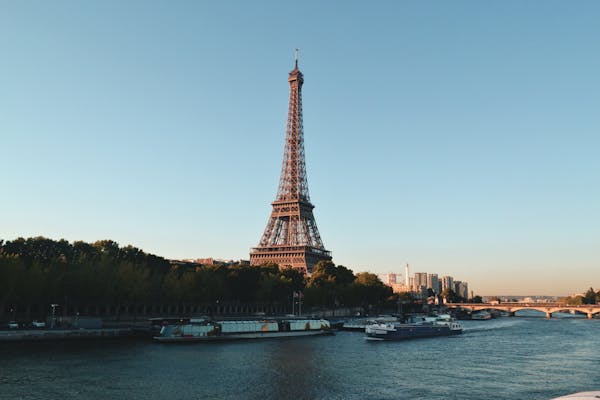Planning a trip to France in 2025 demands more than just a list of sights. This guide offers expert advice covering each region’s unique charms—from Parisian streets to Alpine slopes—while focusing on practical tips, local customs, and offbeat experiences. Whether seeking iconic landmarks or hidden gems, you’ll find tailored itineraries and up-to-date travel essentials to make your journey seamless and memorable.
Essential Planning and Need-to-Know Travel Tips for Exploring France in 2025
Vous pourrez voir sur cette page : culturefrancia.com/en/ de nombreux conseils pratiques couvrant l’ensemble des démarches administratives essentielles pour voyager en France en 2025. Entry requirements for France depend on your nationality. Citizens from the EU, EEA, and Switzerland can enter France with a valid passport or national ID card. For non-EU travelers, a Schengen visa is often required, though some countries benefit from visa-waiver agreements. In 2025, all non-EU visitors, including those previously exempt, will likely need an ETIAS travel authorization prior to arrival. Make sure your passport is valid for at least three months after your intended departure. Always double-check current documents needed—visa policies may shift with international regulations.
Have you seen this : Boat expedition palawan: navigating hidden paradise between el nido and coron
Visa requirements vary notably by country of origin. The official France tourism resources highlight that nationals from the US, Canada, Australia, and Japan currently do not need short-stay visas but will require ETIAS clearance. For extended visits, work, or study, apply for the proper visa in advance through French consulates. Proof of accommodation, return tickets, and sufficient funds are often requested upon entry.
Planning when to travel maximizes your experience. The best times to visit France are late spring (May–June) and early fall (September–October), balancing mild weather with fewer tourists. Summers in popular regions like Provence and the French Riviera can be very busy and warm, while the Alps are best for winter sports from December to March. Always check the local climate for your destination. Pack layers for regional variation: coastal Brittany stays breezy, Paris can see showers year-round, and southern regions might require sun protection, even in spring.
This might interest you : Exploring britain’s stone circles: a must-read guide for an unforgettable adventure
France regularly updates its travel advisories covering safety, health, and Covid-19 considerations. As of 2025, standard travel health precautions apply, and no routine Covid-19 restrictions are expected, though it remains wise to consult up-to-date advisories. Carry copies of essential health and travel insurance documents, and consider EU-recognized digital health apps if available. Public safety remains high in major cities and rural areas, but always monitor official channels for recent alerts about strikes, demonstrations, or local hazards.
Expert Guide to France’s Regions, Must-See Destinations, and Itineraries
Paris and Urban Highlights: Art, Culture, and Landmarks
Paris travel essentials center around seamless access to the city’s robust public transportation, money-saving passes, and recognizing peak visit times to the Louvre, Eiffel Tower, and Sainte-Chapelle for more relaxed experiences. The best places to visit in Paris fuse grand architectural sites and world-class art: marvel at the Louvre’s pyramid, step into the Orsay’s Impressionist halls, and stroll the banks of the Seine surrounded by literary and fashion icons.
Lyon travel highlights rival Paris for culture, offering Roman theaters, vibrant local cuisine, and storied passageways in its old town. From Paris, day trips uncover the legendary Versailles Palace and Monet’s Giverny gardens.
Regional Diversity: Normandy, Loire, Provence, Riviera & the Alps
Normandy history and landmarks tell France’s story through the Bayeux tapestry, Rouen’s Joan of Arc sites, and Mont St-Michel’s soaring abbey. Loire Valley chateaux tours reveal fairy-tale castles like Chambord and Chenonceau amid riverside villages. Provence must-see sights blend ancient marvels, hilltop villages, and vibrant markets.
French Riviera travel planning leads to Nice’s art museums, Monaco’s luxe appeal, and Mediterranean beaches. Southern France countryside exploration features vineyard lanes, Roman ruins, and the lavender fields of rural Provence.
Top Suggested Itineraries: Week-Long, 10-Day, and 14-Day Travel Routes
Efficient itineraries tie together iconic landmarks of France and UNESCO World Heritage sites France: seven days might prioritize Paris travel essentials and the Loire Valley; ten-day routes can expand to Lyon and Provence must-see sights; two-week journeys highlight the best places to visit in Paris plus Normandy’s coastline, southern France countryside exploration, and Alsace wine route and villages, ensuring a rewarding, varied trip.
Practical Advice: Transport, Accommodation, Local Experiences, and Culinary Highlights
Getting Around: Trains, Metros, Buses, Car Hire, and Regional Transport Insights
A public transport guide in France is essential for navigating cities and regions efficiently. The nation’s SNCF-operated train travel itineraries France enable swift connections between hubs like Paris, Lyon, and Nice, with high-speed TGV routes and convenient regional lines. Within Paris, metro networks, buses, and RER trains provide comprehensive coverage for most local stops. For more rural destinations and wine-producing areas, renting a car is common, especially when exploring the best beaches on French Riviera or indulging in outdoor and nature travel in France. Transport cards—such as Paris Visite or multi-day rail passes—help visitors simplify journeys and potentially cut costs.
Where to Stay: Hotels, Hostels, Apartments, and Family-Friendly Lodging
A wide range of paris accommodation options caters for all budgets, from luxury hotels to practical apartments and hostels. Families or groups may opt for hotel suites or apartment rentals across major cities and scenic countryside. Accommodation types in France vary, offering everything from historic hôtels particuliers to countryside gîtes. For those prioritizing savings, hostels and budget stays in France offer comfort and safety, particularly in larger cities and near top tourist sites.
Dining, Markets, and Local Etiquette: French Food Traditions, Wine Regions, and Cultural Tips
France culinary experiences and wine tours tempt travelers with regional delicacies, from crusty baguettes to Provençal ratatouille and Lyonnaise meats. Guided vineyard visits are especially popular in Bordeaux and Champagne, while the Michelin star dining guide France points to world-class restaurants. Lively local markets and artisan shops in every region showcase specialties like cheeses, olives, and patisserie—encouraging discovery and conversation. Practicing basic French language travel tips signals respect, while observing cultural etiquette while traveling in France—such as polite greetings and formal titles—enhances all interactions.






